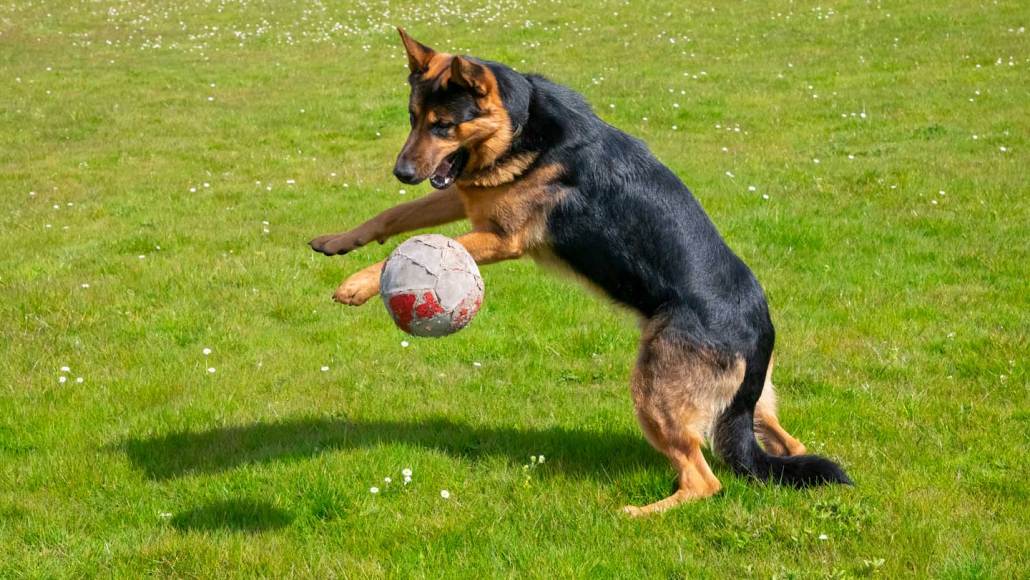Toy-obsessed dogs give clues to addictive behaviors
Dogs at play may parallel some human addictions

For some dogs, toys can exert an irresistible pull in ways that may parallel human behavioral addictions.
Photos by R A Kearton/Getty Images
If you’ve ever had a slobbery ball at your feet and a dog’s hopeful eyes asking for yet another throw, then you know that some dogs really love to play. Now, scientists back that up by finding that some pups’ behaviors share features with human addictions.
Behavioral biologist Stefanie Riemer and her colleagues explored the allure of toys by studying a pack of 105 pet dogs, all of whom relished a good play session. Each owner chose three toys from a larger stash — a ball, a plush toy and a tug toy — that they thought their dog would like. But then the dog had the final say; the toy that garnered the most canine interest was used for the experiments.
For a toy-obsessed dog, these tests were tough. In one, scientists put the toy on a shelf, inaccessible to the dog, and measured the dog’s reaction, which might include whining, looking up and jumping. Another test pitted the toy, tucked into a closed box, against a freely available puzzle filled with dry food. Some dogs pawed at the box and ignored the food. Researchers also measured how long it took a dog to calm down after the toy was gone.
With a scoring system based on these test results, 33 of these pups exhibited signs of what they call addictive-like behavior, Riemer and colleagues report October 9 in Scientific Reports.
Play — not the toy itself — is behind the drive, Riemer suspects. Mirroring some features of human addictions, dogs at play may be chasing good feelings. “I think the reason why the dogs want the toy so much is really because it’s associated with this exciting play,” she says. “So, it’s really the playing, but not the toy.”
This intense drive for play was more prevalent among terriers and shepherds. That makes sense, says Riemer, of Vetmeduni Vienna. “These traits are desirable in working dogs, easy to motivate, high focus, high perseverance.”
It’s not clear how many dogs might fall into this category, but it’s probably somewhat rare. An unpublished survey of about 1,600 dogs showed that only about 3 percent of the pups would be classified as having addictive-like behavior toward a toy, Riemer says.
Behavioral addictions in people aren’t well understood, and these intense behaviors in dogs are even less well understood, Riemer says. She cautions against equating the two. The results raise lots of questions, but they also suggest the importance of play. “Play is really valuable also for the dog-human relationship,” Riemer says. “It’s something that you should foster.” Her own dog, a Russian Toy named Yari, prefers a tennis ball.







